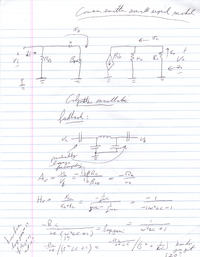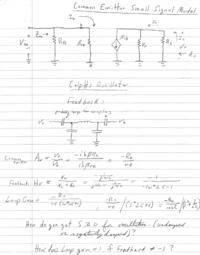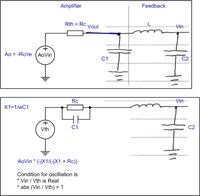obrien135
Full Member level 5
- Joined
- Nov 10, 2009
- Messages
- 240
- Helped
- 5
- Reputation
- 10
- Reaction score
- 5
- Trophy points
- 1,298
- Location
- Connecticut
- Activity points
- 3,259
Hello,
I tried to analyse a colpitts oscillator based on common emittor small signal model and analyses of feedback / phase changeing network. I don't know if I got the equation for voltage gain in a common emittor amplifier right, my text book is in the basement right now. I have to find it. But the calculations I did are shown on the attached sheet. The question is, how is a phase shift of zero achieved and how do you get a transfer function with a pole that has a real component >= 0 so it will be unstable and therefore oscillate?

I tried to analyse a colpitts oscillator based on common emittor small signal model and analyses of feedback / phase changeing network. I don't know if I got the equation for voltage gain in a common emittor amplifier right, my text book is in the basement right now. I have to find it. But the calculations I did are shown on the attached sheet. The question is, how is a phase shift of zero achieved and how do you get a transfer function with a pole that has a real component >= 0 so it will be unstable and therefore oscillate?



